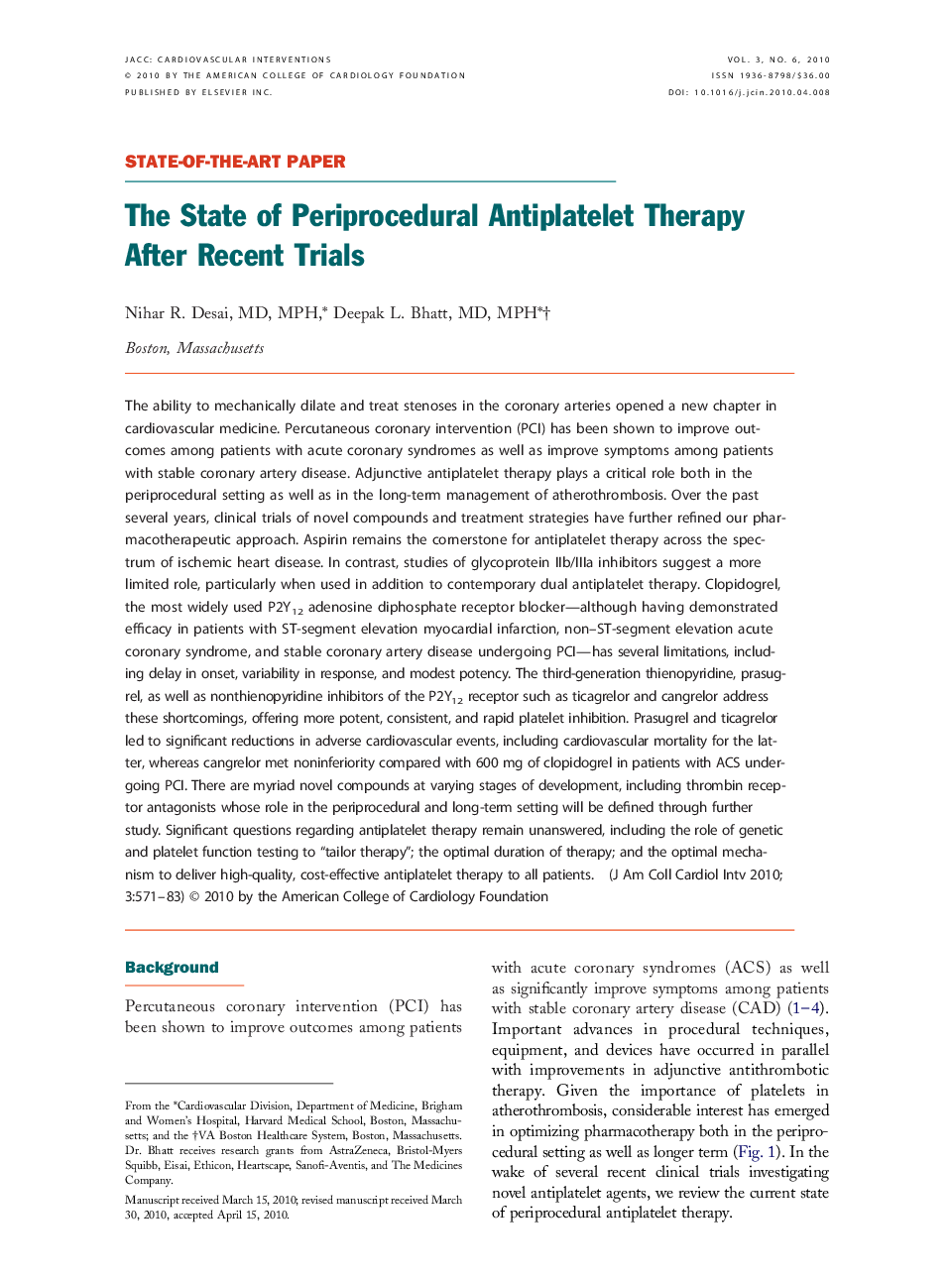| Article ID | Journal | Published Year | Pages | File Type |
|---|---|---|---|---|
| 2941230 | JACC: Cardiovascular Interventions | 2010 | 13 Pages |
The ability to mechanically dilate and treat stenoses in the coronary arteries opened a new chapter in cardiovascular medicine. Percutaneous coronary intervention (PCI) has been shown to improve outcomes among patients with acute coronary syndromes as well as improve symptoms among patients with stable coronary artery disease. Adjunctive antiplatelet therapy plays a critical role both in the periprocedural setting as well as in the long-term management of atherothrombosis. Over the past several years, clinical trials of novel compounds and treatment strategies have further refined our pharmacotherapeutic approach. Aspirin remains the cornerstone for antiplatelet therapy across the spectrum of ischemic heart disease. In contrast, studies of glycoprotein IIb/IIIa inhibitors suggest a more limited role, particularly when used in addition to contemporary dual antiplatelet therapy. Clopidogrel, the most widely used P2Y12 adenosine diphosphate receptor blocker—although having demonstrated efficacy in patients with ST-segment elevation myocardial infarction, non–ST-segment elevation acute coronary syndrome, and stable coronary artery disease undergoing PCI—has several limitations, including delay in onset, variability in response, and modest potency. The third-generation thienopyridine, prasugrel, as well as nonthienopyridine inhibitors of the P2Y12 receptor such as ticagrelor and cangrelor address these shortcomings, offering more potent, consistent, and rapid platelet inhibition. Prasugrel and ticagrelor led to significant reductions in adverse cardiovascular events, including cardiovascular mortality for the latter, whereas cangrelor met noninferiority compared with 600 mg of clopidogrel in patients with ACS undergoing PCI. There are myriad novel compounds at varying stages of development, including thrombin receptor antagonists whose role in the periprocedural and long-term setting will be defined through further study. Significant questions regarding antiplatelet therapy remain unanswered, including the role of genetic and platelet function testing to “tailor therapy”; the optimal duration of therapy; and the optimal mechanism to deliver high-quality, cost-effective antiplatelet therapy to all patients.
